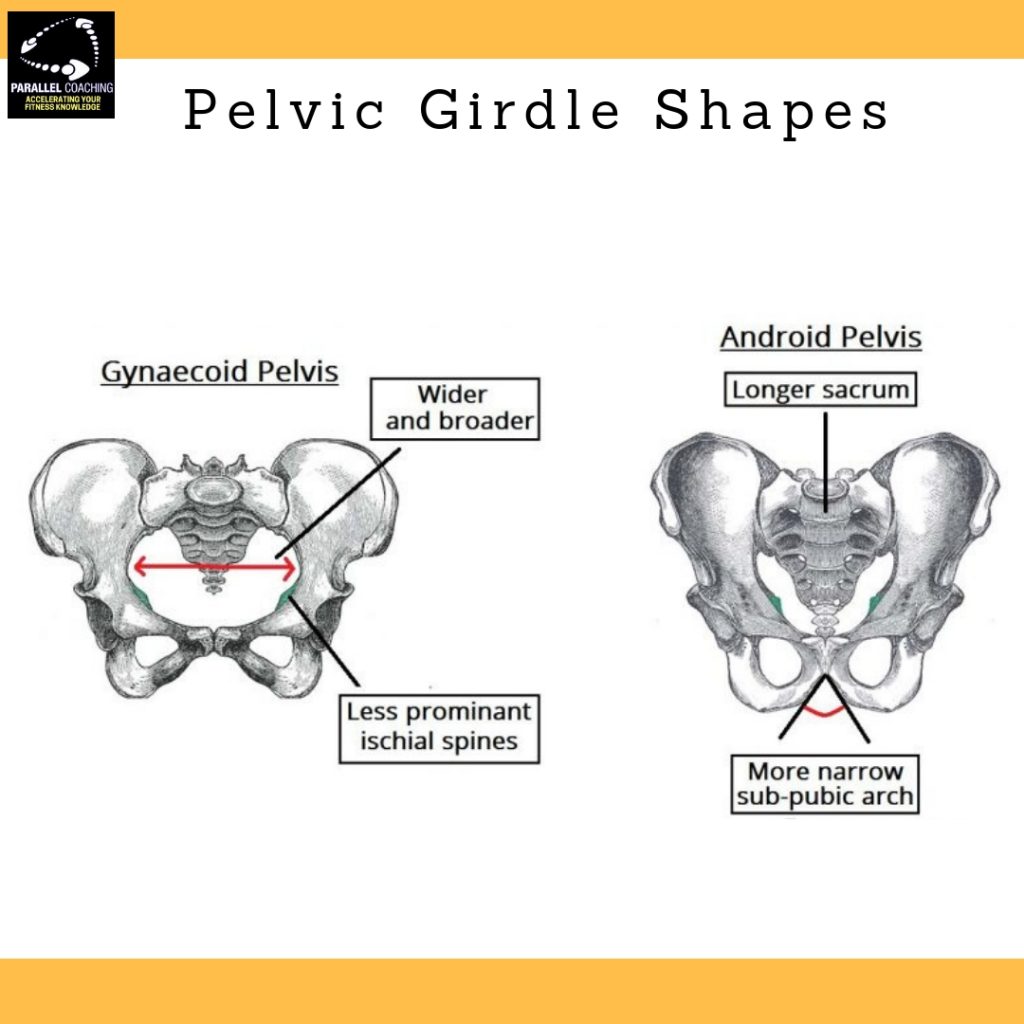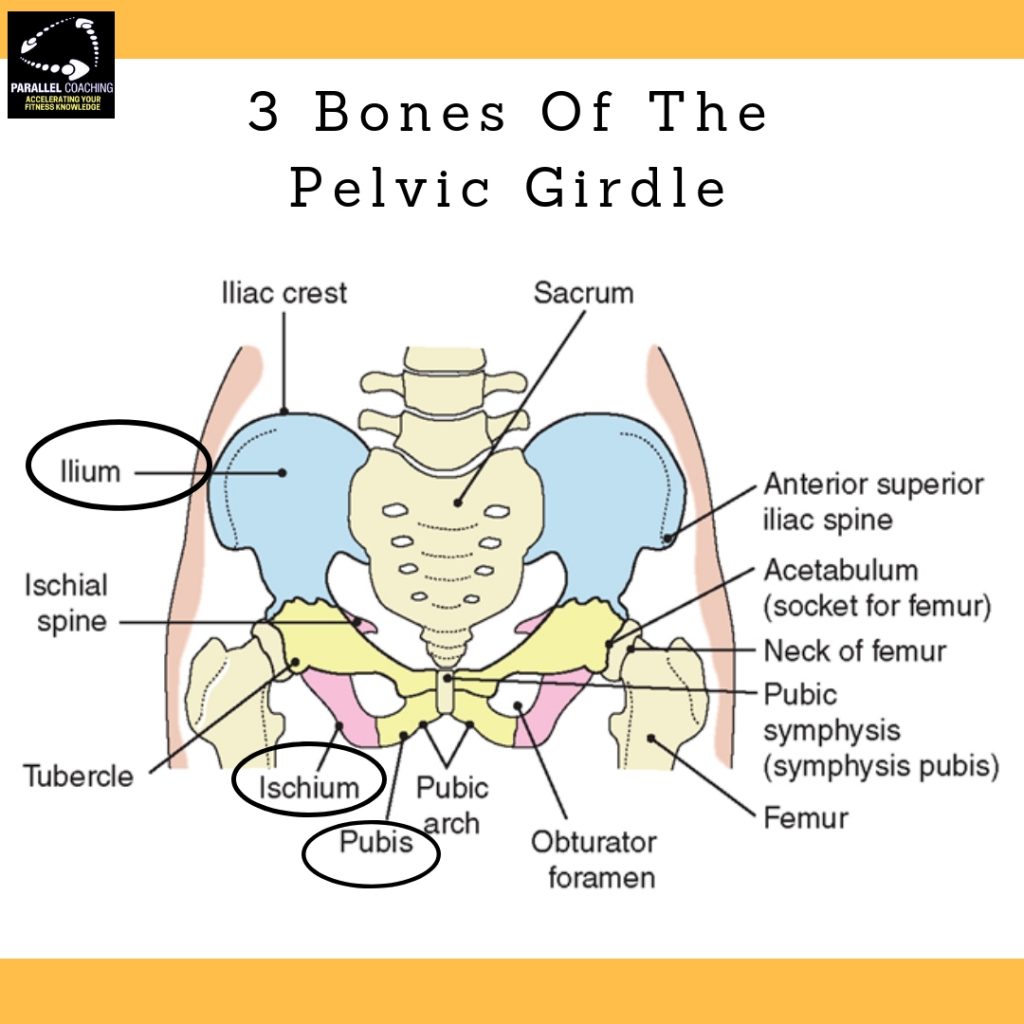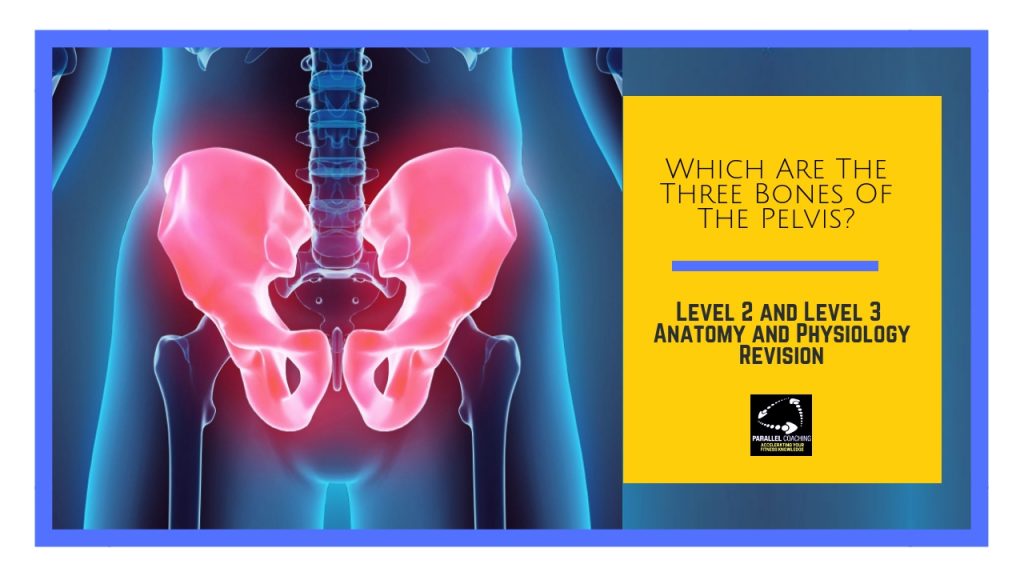As part of the Level 2 and Level 3 Anatomy and Physiology exam, you need to know the 3 bones of the pelvis. Tackle today’s mock question below and read on for a detailed answer and an explanation about the bones of the pelvis, as well as a quick method to help you remember
📣 Q: Which Are The Three Bones Of The Pelvis ❓
🧐 Level 2 + 3 Anatomy & Physiology Mock Question 🧐
📣 Q: Which Are The Three Bones Of The Pelvis❓
A. Ilium Sacrum, and Pubis
B. Ilium, Sacrum, and Femur
C. Ilium, Ischium, and Pubis
D. Ilium, Coccyx, and Ischium
What’s the CORRECT answer? Go…
💪 👇 👇 👇 💪
Answer
The Correct Answer is C = Ilium, Ischium, and Pubis
Find out why, by reading the rest of the blog below...
3 Facts about the Pelvis:
Fact 1: The Pelvic Girdle
Contrary to what peeps believe, the pelvis is not one fixed unit, it is actually two pelvic girdles, a left and a right-hand side. As a result of this, the Pelvic Girdle is part of the appendicular skeleton.
>> Learn more about the Axial Appendicular Skeleton HERE
Fact 2: The Function
The Pelvic Girdle is strong and stable, the main functions are:
- Transfer of weight from the upper axial skeleton to the lower appendicular components of the skeleton, especially during movements like walking and running.
- Provides attachment for a number of muscles and ligaments used in locomotion.
- Contains and protects vital digestive nad reproductive organs.
Fact 3: Shape Differences
The majority of women have a gynaecoid pelvis, as opposed to the male android pelvis. The slight differences in their structures create a greater pelvic outlet, adapted to aid the process of childbirth. When comparing the two, the gynaecoid (female) pelvis has:
- A wider and broader structure yet it is lighter in weight
- An oval-shaped inlet compared with the heart-shaped android pelvis.
- Less prominent ischial spines
- A greater angled sub-pubic arch, more than 80-90 degrees.
- A sacrum which is shorter

The three bones of the Pelvis?
There are three Bones that make up EACH SIDE of the Pelvic Girdle:
The Pubis
The left and right pubic bones meet at the front of the pelvis joined by a cartilaginous joint called the pubic synthesis (this separates slightly at childbirth)
The Ilium
The Right and left ilium are the large fan-shaped bones, that give the pelvis its distinctive shape. These bones offer loads of surface area for muscle attachments. There are a few notable bony-land marks on the Ilium that you need to know for your Level 3 Anatomy and Physiology Exam:
- The Iliac Crest
- The Anterior Superior Iliac Spine (ASIS)
- The Posterior Superior Iliac Spine (PSIS)
The Ischium
These are commonly known as your “Sits Bones” – you can feel these when you sit upright on a hard seat. These join with the Pubis to create the Obturator Foramen (looks like a hole from the front).

The Mock Question above lists a few combinations of bones, so it is important that you read the question carefully and also can identify the correct bones of the pelvis.
Test Your Knowledge
1.What type of joint is the Pubic Synthesis?
A. Synovial
B. Cartilaginous
C. Fused
D. Fixed
2. Which of the following is not a bone of the pelvis?
A. Pubis
B. Femur
C. Ischium
D. Ilium
3. Which of the following is part of the appendicular spine?
A. Pelvic Girdle
B. Cranium
C. Rib Cage
D. Sacrum
Answers:
1 = B
2 = B
3 = A
If you want more mock questions like this, then you can download more Free Mock Questions: DOWNLOAD NOW
Need More Help with your Level 3 Anatomy Revision?
For Trainee FITPROS Taking Their L3 Anatomy & Physiology Exam.
Learn, Revise & Pass Your Level 3 Anatomy & Physiology Exam In Under 10-hours
(Without Having To Spend Hours Revising Or Feeling Overwhelmed)
If you want to get your revision structured, learn everything you need to know, and feel confident on exam day, then click the link below:

Dedicated to More
Hayley “Bones Of The Pelvis” Bergman
Parallel Coaching
P.S. You can also find us on the following platforms:
Instagram: Follow Now
Facebook: Like Our Page
Twitter: Tweet Us
YouTube: Subscribe Here
More Skeletal System Blogs: HERE

